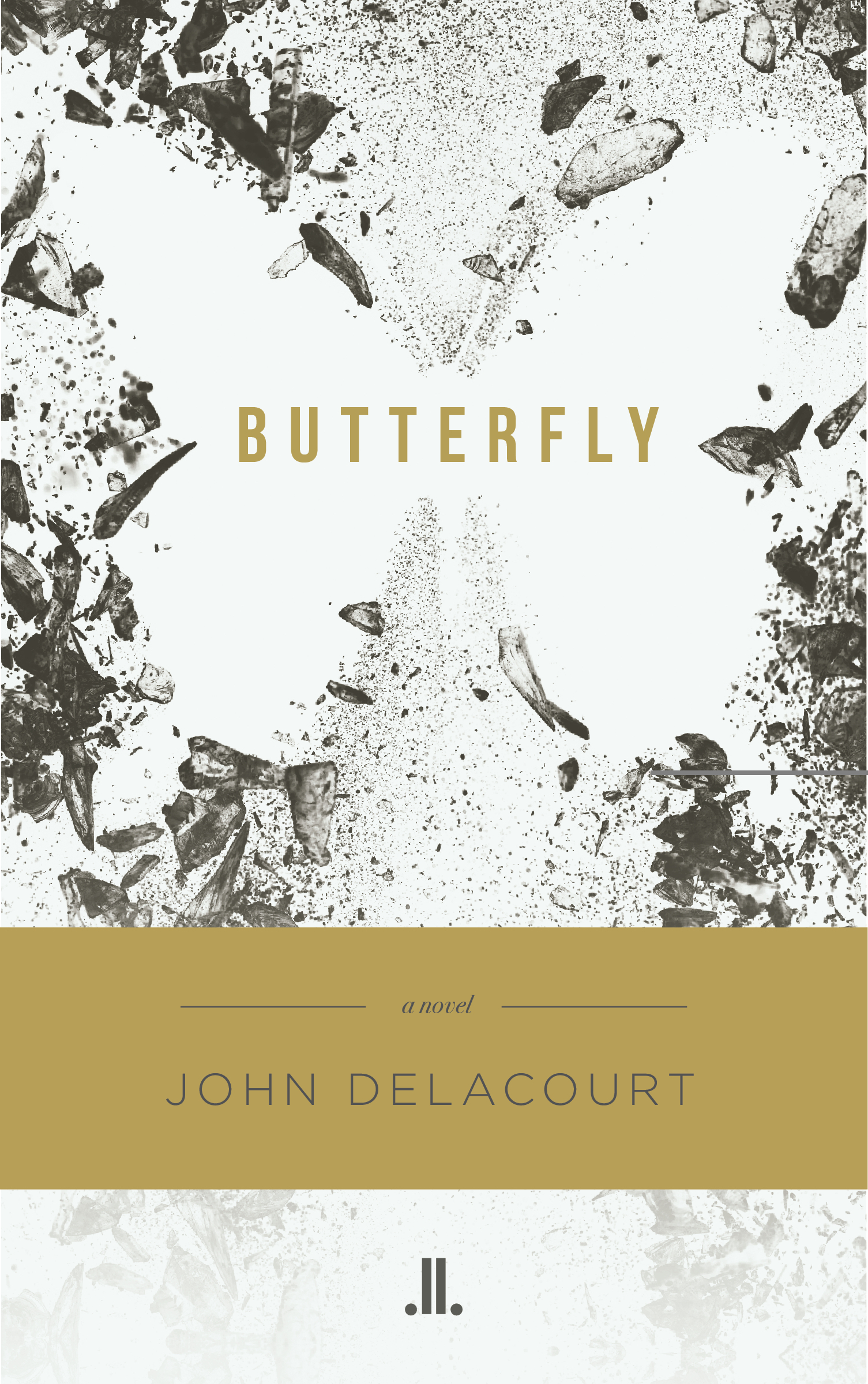
Supplied
- Title: Butterfly
- Author: John Delacourt
- Genre: Mystery
- Publisher: Linda Leith
- Pages: 226
Is the past still past if it exists on video? In a culture obsessed with recording itself, skeletons that once disappeared into the closet can re-emerge decades later to bring anyone’s mistakes into the hard light of judgment. The wrong snippet of footage, seen by the wrong person, can come to define a life.
What this means for memory and for revenge are questions the novelist John Delacourt explores in his intricate third novel, Butterfly. Delacourt is an Ottawa-based writer whose previous work includes the novels Ocular Proof and Black Irises. His preferred territory is a dense maze of hidden secrets, set at the juncture of art and politics.
Moving through eight different narrators, Butterfly tells the story of Natasa Ruzic, a Bosnian woman living in Toronto, who becomes romantically involved with her writing instructor, Lucien Bollinger. Before long, he’s been drawn into her circle of admirers and antagonists, which overlaps the world of Canada’s contemporary art scene and the war-scarred history of Bosnia in the early 1990s.
This being, ostensibly, a thriller, murder is afoot. Natasa is the latest muse of Alex Rebane, a once-acclaimed painter enjoying a lucrative, late-career comeback – until he’s killed in Toronto during the Northeast blackout of 2003. As soon as we learn of his death, it’s contested. In a chapter narrated, in direct address, by Dejan Vidic, an old flame of Natasa’s from Bosnia, he defends himself against unseen accusers, and puts the blood on Natasa’s hands: “Rebane, I tell you, Rebane was all her, not me.”
This murder plot is a slick vehicle for a deeper mystery. Crucially, this one leaves no room for doubt. Video footage has surfaced, placing Dejan and one of Rebane’s hangers-on, Petar Stepanovic, at the scene of a massacre in the Bosnian town of Foca – Natasa’s hometown. In July, 1992, Serbian forces carried out a brutal campaign of ethnic cleansing and mass rape there. Natasa, we learn, is a woman on a mission: Something she sees in the video has changed, irreparably, her perspective on what happened in Foca, and who she is as a result.
Although Natasa’s story is historically specific, her predicament is a familiar one in the digital age. Since the introduction of smartphones and social media about a dozen years ago, it’s common for footage from the past to come to light and change how we see a person or event we thought we knew. Anything we put on social media exists, indefinitely, on the servers of some big tech company or another; the first generation of kids born after the release of the iPhone are becoming teens and realizing how much of their lives has been captured and posted on public platforms. From Kevin Hart to Anthony Weiner (both exposed by digital artifacts preserving their misdeeds), the question of how we carry our online pasts has become central to our public selves. As such, the themes in Delacourt’s book feel astutely retrospective, reaching back to old wars and the old masters of painting to tease out the origins of our current obsession with crafting our images online.
If the telling of the story sometimes feels a bit old-fashioned, it’s partly in the absence of the ubiquitous tools of modern tech. The viral effect enabled by smartphones and massive social networks don’t factor into Butterfly, which is set in the years before social media exploded. These days, a revenge-seeker in possession of damning video might simply post it to YouTube, where the court of public opinion could weigh in, whereas Natasa seeks a more intimate vengeance – fuelled, it turns out, by a painful personal connection to the Foca footage. Her case underlines the extent to which any story set before the dawn of Facebook is now, by definition, a period piece.
In the end, this works in Delacourt’s favour. His attention to detail and his complex web of allusions contribute to an atmosphere of refined literary intrigue that will appeal to readers of Arturo Perez-Reverte and Donna Tartt. At times, his erudition runs away with him; in the space of five pages of Natasa’s diary, we get Gogol, Dostoevsky, Nietzsche, Wittgenstein, Ionesco, Chekhov and Shakespeare in a raucous intertextual parade. One character’s entire narration is addressed to the Baroque painter, Caravaggio.
Yet, if the web is dense, it serves the formal purpose of conveying how experience becomes layered by memory and interpretation. Images that appear to tell one story can transform over time, depending on who looks at them – and how. The forged artworks at the heart of Butterfly’s art-world plotline invoke the question of authenticity – of what elusive spirit imbues a work or an action or a person with the quality of the real. If we leave a million pieces of ourselves behind us, which ones are true, and which belong to selves we’ve discarded like old cocoons? The answer may not be ours to give, if it comes to the question of reckoning.
Natasa, obsessing over the video that changed her life, tells herself she’ll soon reach the limits of her tolerance. “And when I click on the clip for the final time,” she writes, “I promise myself I will never look at it again. The time has come for me to believe I can keep my word.”
But can she look away? Who knows how a moment caught on video might follow you around, insisting to be seen.
Expand your mind and build your reading list with the Books newsletter. Sign up today.